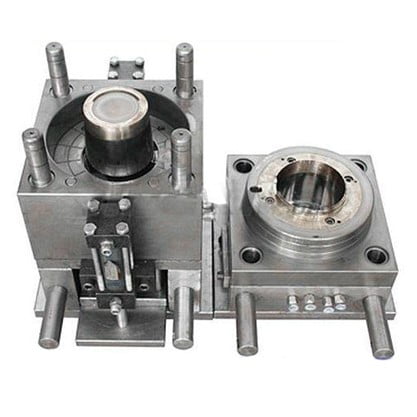Molds play a decisive role in determining the quality of plastic buckets. Taking a 20L mold as an example, in China, a standard mold is typically priced around $30,000 USD. The material used is usually 45# steel (considered the lowest grade, with special treatment during mold opening to increase its hardness) or P20. Molds are divided into moving and fixed parts, or front and rear parts, with each part further divided into mold frames and mold cores. Often, mold factories use better-quality material for the mold core and slightly inferior material for the mold frame, as the mold core is directly involved in product formation. The injection cycle for a 20L bucket mold is generally around 40 seconds with a standard injection molding machine. Similarly, the quality and price of P20 steel vary among manufacturers, with Baosteel being the best but also the most expensive, significantly differing from the prices of smaller factories.
For a higher-quality 20L mold, the cost rises to around $42,000 USD, and the material is typically 718 steel, NAK80, S136, etc. 718 steel is commonly used, ensuring that at least the mold core is made of 718, while the mold frame is made of P20. Theoretically, the injection cycle for such a mold can be as low as 27 seconds, but this is contingent on the cooling water system of the machine and factory keeping pace. A further upgrade, costing around $55,000 USD, involves adding a copper layer to the bottom part of the mold, improving cooling efficiency and reducing the injection cycle by approximately 3 seconds to reach around 24 seconds. If paired with a high-speed injection molding machine, the speed can be as fast as 22 seconds.
 High-quality molds not only result in faster injection cycles but also provide more stable product quality, reducing issues such as burrs and inconsistencies between batches. They require less maintenance over an extended period and can theoretically endure around 1 million cycles without major maintenance. On the contrary, lower-quality molds may exhibit eccentricities after producing several thousand sets, leading to minor maintenance. With more usage, a major overhaul at the mold factory becomes necessary, resulting in higher long-term maintenance costs and greater quality risks. Therefore, if there is a substantial production volume, investing in high-quality molds is undoubtedly more reasonable for the factory’s long-term production and product quality stability.
High-quality molds not only result in faster injection cycles but also provide more stable product quality, reducing issues such as burrs and inconsistencies between batches. They require less maintenance over an extended period and can theoretically endure around 1 million cycles without major maintenance. On the contrary, lower-quality molds may exhibit eccentricities after producing several thousand sets, leading to minor maintenance. With more usage, a major overhaul at the mold factory becomes necessary, resulting in higher long-term maintenance costs and greater quality risks. Therefore, if there is a substantial production volume, investing in high-quality molds is undoubtedly more reasonable for the factory’s long-term production and product quality stability.


Write a Comment